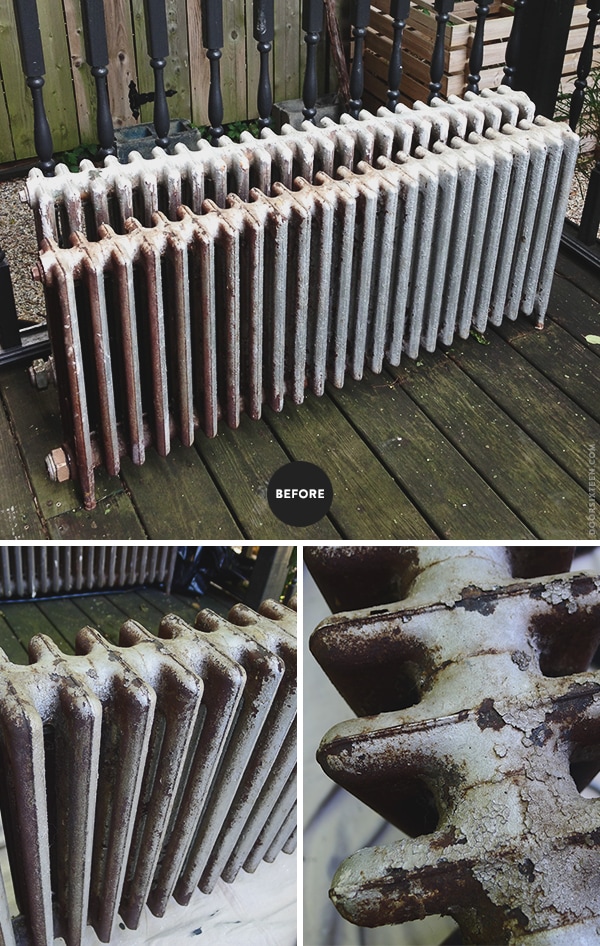
There are ten cast iron steam radiators in our house, most of which are in varying stages of rusty, paint-peeling horribleness. We’ve sent a couple of them out to be sandblasted and powder-coated (I’ve never really written much about that, but I get a lot of questions — I’ll put a post together soon!), but that’s wayyyyy out of our budget for the kitchen renovation. As I’ve mentioned, we’re only putting one of the one of the two radiators back after the tiling and the floors are complete. Over the weekend, I went ahead and gave my best effort to rehabbing the one that’s in better shape.
And no, the back porch isn’t painted green, that’s all algae. Yes, it would be very nice to have a roof on the porch, and maybe even screening. Someday…
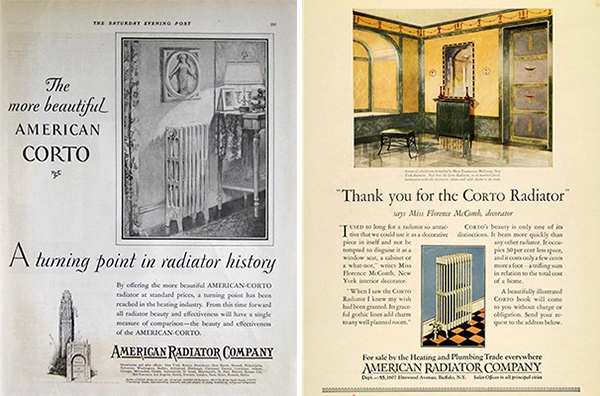
The kitchen radiators don’t have any of the ornate, Rococo elements that the others in our house do, so I’m assuming they’re a little newer. They were manufactured by the American Radiator Company (ARCO), for whom one of New York City’s most beautiful skyscrapers was built in 1924. A little internet sleuthing tells me that ARCO patented a similar style called “Corto,” named for French industrial designer Louis Courtot. According to Miss Florence McComb, a decorator who endorsed Corto radiators in a print ad from 1925, its “graceful Gothic lines add charm to any well-planned room.” Indeed, Florence, indeed! I need to do a little more digging into old ARCO catalogs to compare more closely and look at later models, but I think it’s a safe guess that they were put in sometime in the 1930s, which, based on the style of the bathtub, is around the same time we believe the downstairs bathroom was added.
But enough about that stuff! On to the dirty work…
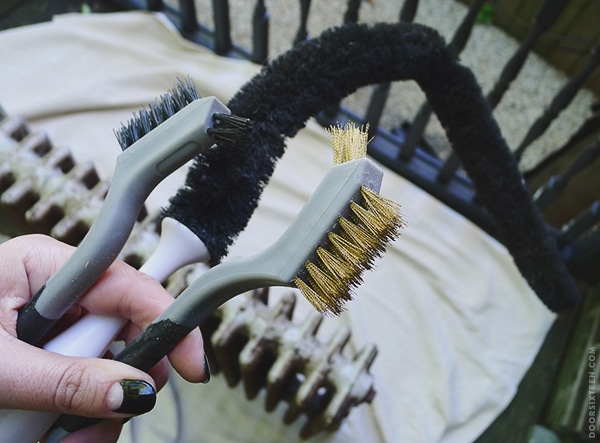
I’ve mentioned this before, but if you have cast iron radiators in your home, then you NEED a dryer vent brush. Trust me on this — it’s the only way to really get between the fins and keep them dust-free inside. Mine is from Casabella, but I’m sure they all work just fine.
After giving the radiator a very thorough cleaning inside and out with the vent brush, I moved on to a copper wire brush and hard-bristled nylon brush. That got most of the flaking paint off, but there were a few tougher chunks that I had to hit with a chisel. I gave whatever surfaces I could reach a light sanding, then did another round with the vent brush to get get all of the rust dust and paint bits out. The final preparation step was a through washing with TSP substitute and a good, long hose-down. I don’t have a power-washer, so I just did the best I could with my hose nozzle on the “jet” setting.
Did all of the existing paint come off? No, of course not, but everything that was loose or peeling did, and that’s good enough for me.
Then I went to the Dutchess County Fair in Rhinebeck and let the radiator dry completely overnight. (You could probably leave out the fair part, but that does make everything more fun. Friends! Fried dough! Rides! Waves of nausea!)
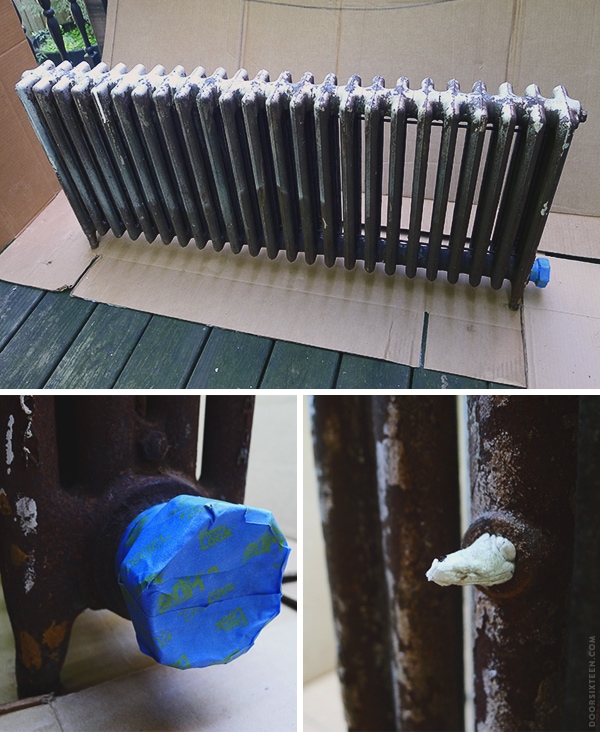
Before busting out the spray paint, I very carefully taped up the new brass nut and pipe fitting that my plumber put on (he was supposed to wait to do that, but he forgot). I took the vent off of the side and rolled up a little wad of paper towel to stick in the hole so paint wouldn’t get in there and affect the threading.
Side note: RADIATORS ARE REALLY HEAVY. I mean, obviously, but you don’t realize quite how heavy until you actually try to move one. If I had to guess, I say this thing weighs at least 300 pounds. My lower back — unhappy even in its best moment — hates me right now. I keep hearing Joe Garagiola shilling for Doan’s in the back of my head. Be careful. I should have asked Evan for help every time I needed to move the radiator, but I get sort of temporarily bionic when I’m working on house stuff, and I feel like I can do everything myself. I’m paying for it now. Owwww.
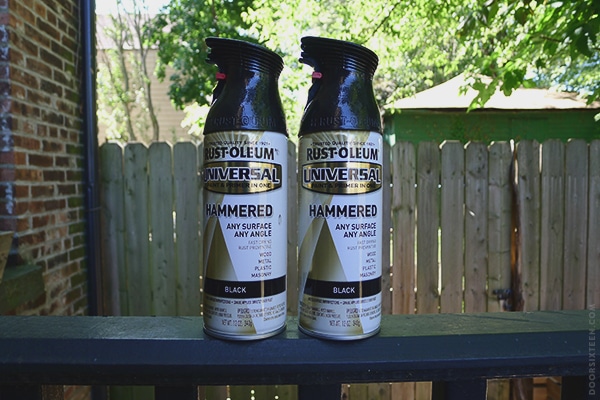
Cast iron radiators don’t get hot enough to require that special high-heat paint they make for stuff like barbecue grills* (see edit note below), so you can really use just about any paint that’s rated for use on bare metal and rust. I am a Rust-Oleum devotee when it comes to spray paint. I initially thought I’d need to use a separate rusty metal primer first, but Rust-Oleum’s two-in-one Universal line actually advises against using a separate primer. I didn’t want to take a chance with screwing up the adhesion, so I did indeed skip the primer.
I decided to go with the hammered-finish spray paint in glossy black. As lovely as I know a flat black would have been, I want the radiator to be as easy to clean as possible. High gloss finishes tend to accentuate flaws, so I figured the hammered effect would help to counteract that. I wound up doing three coats of paint to make sure everything was totally and evenly coated — about four cans’ worth in all.
As easy as the actual spray-painting was, I really can’t imagine doing this indoors unless you’re not living in your house or if you have the most amazing ventilation ever. The fumes were horrendous — I even apologized to my neighbors. I guess if you could REALLY mask off everything super well (spray paint goes everywhere), open all of the windows and then leave the house for the rest of the day it would be alright, but given the option…do it outside.
*EDIT, one year later:
Since a lot of people have asked in the comments, I have now gone through a full winter with this radiator in use, and it has held up just fine without any issues at all. That said, if you know that your radiators reach surface temperatures higher than 200°F, you should probably pay attention to the directions on the can and not use this kind of paint on them. Rust-Oleum makes High Heat and Ultra High Heat spray paints that might work better for you. I have no personal experience with either product.
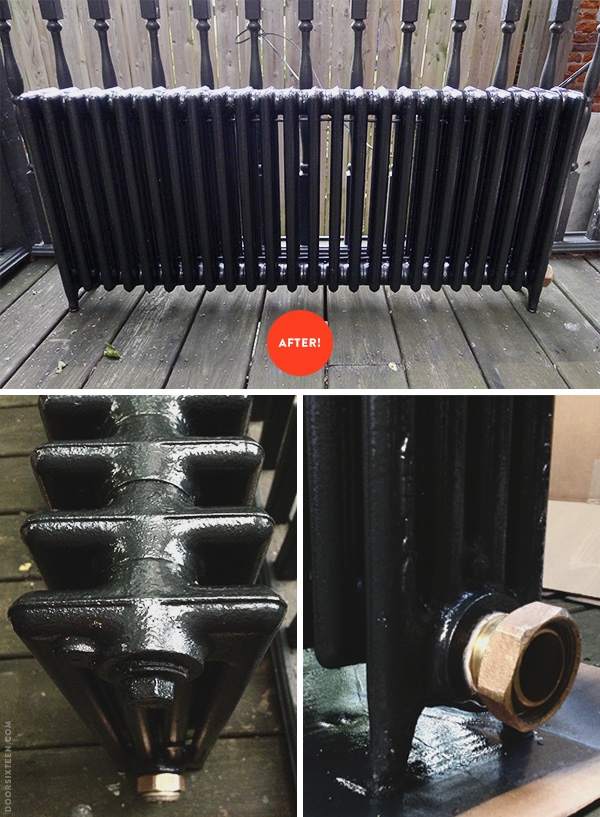
Goooooooorgeoussssss!!! I’m really, really happy with how the radiator came out. For $28 worth of spray paint, this is a very good result. Sandblasting and powder-coating would have been upwards of $500. Yeah, in ten years I might need to do some touch-ups, but really…it’s fine. Better than fine. For a while Evan and I had been considering replacing these radiators since they’re not as “pretty” as the ones in the rest of the house, but now? No way! I love the way this looks. (Just wait until you see it in place with the subway tiles!! LOVE.)
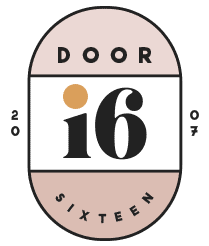
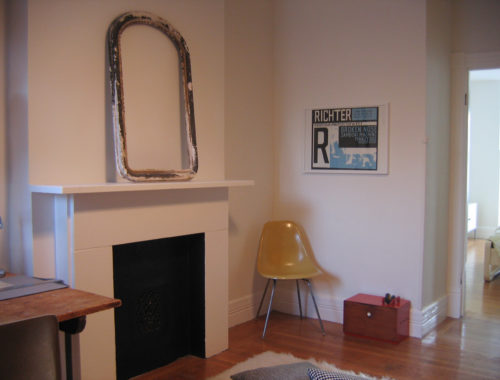
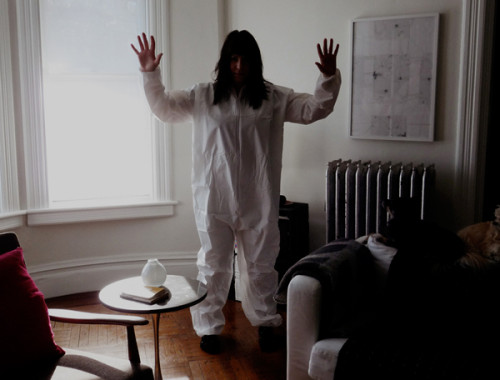


48 Comments
Looks great Anna! Can’t wait to see it in your kitchen.
Love it! It’s so cool seeing how amazing you can make something look on such a tight budget. Thanks for sharing!
Great job! Can’t wait to see it in situ.
Re your porch, I’m guessing it’s north-facing, which moss, of course, loves. A roof over the porch would actually only make the moss situation worse. Your bare wood can be pretty easily cleaned though, with Dawn dish soap “with oxy and enzymes” (it’s biodegradable and safe for animals and plants). Here’s a how-to: http://lauraschneider.hubpages.com/hub/How-to-clean-a-weathered-bare-wood-deck-without-harsh-chemicals
Hi Laura, yeah, the porch is really easy to clean, that’s not an issue. I know it doesn’t look like it here, but I actually do clean it all off periodically! A little vinegar and a scrub brush works perfectly. 🙂
The moss (actually, I should have said algae now that I think about it) only grows in the area that’s exposed to rain, so I’m pretty sure keeping the porch dry would make a positive difference. Our neighbors did the same and they are now algae-free.
(An enclosed porch is probably never going to happen, though, so that’s beside the point, haha.)
We are just looking at a house with radiant heat, your post is a sign! Thank you!
I learned about hammered spray paint soon after buying our fixer upper in 1996. Our budget for anything related to aesthetics rather than function was zero-point-zero, so this paint was a godsend. Our heat register covers were all rusted and then painted different colors, (silver, copper, white!) and a single can of hammered spray paint made a world of difference, as what had been an eyesore suddenly faded into the background. Not a gorgeous feature, just one less ugly thing.
I think I even had enough paint leftover that a friend painted her heat registers as well.
There’s just something so wonderful about motoring through a DIY to-do list.
Katy
How many times have I stared at the dust living inside my radiators, tried with cloths, vacuum cleaner and every other stuff I had around just to learn two years later that there’s actually a tool specifically for that (that I have already researched and found in Spain!) ???
So, blogland once again to the rescue. Great post 🙂
It is LIFE-CHANGING! I actually got a CHICKEN BONE (from the previous occupants, not me) out of the radiator the first time I used it. Ewwwww!!!
The radiator looks great! We are also re-painting some old radiators and were told we had to use “high heat” spray paint. Do you have any previous experience with just using plain old spray paint? I’d love to take advantage of the color options that high heat spray paint doesn’t seem to offer. Thanks!
Crystal, no, I’ve never spray-painted a radiator before, but I have painted several with both alkyd and even latex paints, and I’ve never had any problems.
As with all things, I tend to trust the general consensus of the internet, which is that it’s totally fine to use a spray paint that’s rated for use on bare, rusted metal (like Rust-Oleum) on a cast iron radiator. If it bubbles during winter, I’ll definitely post about it! 😉
I don’t know whether I read about it here, on on MN first, but thanks to both of you for the vent brush advice. I used my recently purchased one last week to clean all 8 cast iron radiators from my new apartment, before scrubbing them thoroughly ready to repaint next week. A couple of mine are a similar size to yours, and I agree with the heavy warning! It took 2 days for my back to stop screaming at me for moving them on my own!
Looks great! Those things always lurk in the corner, gathering dust and rusting away. This one looks brand new!
Still chuckling about “. . .I get sort of temporarily bionic when I’m working on house stuff . . ..”
BINGO! Thank you for that!
Your ‘new’ radiator is lovely, too. Can’t wait to see it in front of the subway tile.
You posted a tease photo earlier of your painted radiator and I assumed you had spray painted it indoors. I just thought, of course, everything you touch turns to gold. Gorgeous, money-saving and amazing – again! My advice would be for nobody to ever spray paint indoor (unless they use a spray booth).
Back in the 70’s when I was furnishing my first apartment, I came home to reclaim my bedroom dresser while my parents were away. I found a can of green spray paint in the basement and went to town in the bedroom (now my mom’s sewing room) only to emerge out from four ombre walls rather dizzy with two dark green snort lines crawling up my nostrils. We had to take steel wool to the floors and repaint the room afterwards and then take the dressers out to the front lawn for a second coat. And if I remember correctly my mom later offhandedly said they’d had the bedroom repainted again because the green bled through (and I don’t think I did a perfect job of getting all the paint scraped up off the floors) … I suppose there’s enough time between then and now to laugh about it. HA!
Can’t wait to see the whole kitchen with the rads in place and all the new tile.
OK, this story is both hilarious and horrible. Your poor parents! Your poor nose!!
I, too, have “plain” radiators in the kitchen while the rest of the house (circa 1900) has beautiful ones with a flame-like pattern on them! About 10 years ago I painted them black but took a gold leaf paint (was kinda like a paste) and lightly highlighted the ornate parts….probably sounds gaudy but it’s subtle and pretty. My theory on why the kitchen ones are plain: I have an old chimney flue there, so I think maybe the old oven put off so much heat that it warmed the whole room and when a renovation was done (60’s?) only plain radiators were available. That or kitchens were strictly utilitarian back then and they didn’t want to spend money on something most people wouldn’t see?
You are a remodeling/refinishing goddess. Nothing new there!
Wow, that looks great.
I would like to note that over here (Holland) similar radiators were used but not with steam, but with hot water I can imagine that these become much hotter than yours. So I think that the paint you need to use depends on the heating system in place.
Also about the quotes for the kitchen not coming together I have some experience with this, sometimes making a proper quote for projects like this costs more time than the actual job itself, because you have to factor in (and think about) a lot of uncertainty.
Have a wonderful day.
Looks sooooo good! Can’t wait to see it all in place. In front of the subway tile, centered below the window…perfection.
I had NO idea that building was the ARCO building! So cool. All of our radiators are also ARCO, and we also have simple/utilitarian ones in the kitchens and bathrooms and fancy ones in the rest of the house (our kitchen radiator is a Corto, and the others are “Rococo”). The model name is embossed on our radiators down at the bottom around the pipe fitting…it can be hard to read through layers of paint, but it’s there. Looks like it isn’t on yours, but I can’t tell from the pictures.
Everything is coming together so well! Go, Bionic Anna, go!
Looks awesome! I am incredibly impressed by your bionic powers – since the radiator weighs more than you, does this make you ant-like? Regarding over spray, I think the pros have equipment that offers finer control than the cans. That said, I have successfully spray-painted ceiling fans in place, a much smaller object than you beautiful radiators. Happy labor day!
Oh man, those radiators look brand new. I tip my hat to you! I would be so afraid of painting something like that that gets hot, but as you say, there is special paint for that job. I also love that you went for black.
Nailed. It.
xx A
god i love that hammered spray paint! we used it on our radiators too…except in the gunmetal color. it’s so good especially on things like that that aren’t perfectly smooth. Nice work!
Did you test for lead paint and if so how? If not, why not? I ask because I ha e similar rads in my new place and was considering doing the same thing.
Nope, I didn’t test for lead paint. My house is 120+ years old, so it’s safe to assume there’s lead paint on everything. That’s part of the reason I’m taking care of stuff like radiators with flaking paint.
Do you know where I can get those little “dish”attachments for old radiators to provide humidty
Hi Carole, if you Google “cast iron radiator humidifiers,” you’ll find lots of options.
How did the normal paint stand up this winter? I have steam radiators that usually go up to 215 degrees so I am a little concerned as I just painted my first one as a trial. I used rustoleum metal primer (rated to 200 degrees), and then the high heat enamel spray. Now that it is done I’m wishing I used a white that was glossy. The high heat is more of a flat white. Did you have any problems?
Hi Kevin, nope, no problems so far! I don’t know how I’d go about checking the surface temperature of the radiator I spray painted, but it gets pretty darned hot.
looks great! We decided to sandblast and powder coat our radiators and are regretting it…Since having it done, 2 of our radiators have developed pin hole leaks. We don’t know why and all the people we’ve talked to say they’ve never heard of it happening, but we are blaming it on the sandblasting and powder coating. Do you happen to know of anywhere in the U.S. that sells used or new radiators? We are thinking of replacing our two leaky ones but thus far have had no luck in finding replacements that aren’t ridiculously expensive. We thought about repairing the holes, but fear that it will happen again in another spot.
Hi Melissa, how weird about the pinhole leaks! Huh. We’ve only had two of our radiators sandblasted, but haven’t had any issues with leaking with either of them. As for replacements, you’re really best off looking for sources in your area given the cost of transporting something that heavy. Have you looked on Craigslist? Also check salvage yards and Habitat ReStore. If you want to replace them with new, old-style radiators, there are a ton of options out there—just Google “cast iron radiators” (and “steam” or “hot water” depending on the type of system you have).
Hi,
I have 4 beig steam radiators and want to do what you did with yours. You say the paint worked fine this past winter? Was their any smell from the paint? I was warned against traditional high heat paint for the radiators because the smell from the heat/paint would linger for a very long time.
Any advice would be helpful.
Thanks,
Pat
Hi
Thx for a great write-up!
I looked at the RustOleum Hammer paint instructions, and they state that it is good only when the surface doesn’t heat up above 200 F. Steam radiators sometimes go to 240 F. Have you experienced any problems?
Thx
mark
Hi Mark, no issues so far. The radiator looks the same as the day it was painted. If you’re concerned about the temperature of your radiators exceeding 200°, you can use a high heat spray paint instead.
Hi–just to let you know that I just purchased 10 used radiators from Consumers Supply Co. in Chicago. They also offer new cast iron radiators, but they are very VERY expensive. I worked with Luis over the phone, and bought them trusting that the pictures he forwarded were accurate, and they were. He is also very good at determining the number of BTU’s you need, based on the square footage of your rooms. I live northeast iowa, and I thought the shipping was very reasonable, as well. There are salvage yards that sometimes have radiators, too, but we really needed the radiators based on BTU’s since we were installing them in new construction and had no old ones to compare sizes with.
Good luck!
Thank You! The results are exceptionally wonderful, and having come across your article in research – I decided to try the same. I have, 4 sand blasted steam radiators and just now before applying the spray paint have read the Rustoleum Universal Forged Hammered Paint and Primer Directions on the back of the spray can which states “Do Not Apply to surfaces that when heated exceed 200 degrees F”> Thank you for your article -but have you actually hooked up steam radiators, for how long, and what have been the results. Thanks for assistance: Gill
Hi Gill, no issues so far (we went through all of last winter with the radiator in use—this post was written in October 2013). The radiator looks the same as the day it was painted. If you’re concerned about the temperature of your radiators exceeding 200°, you can use a high heat spray paint instead.
This article is absolutely misleading. I thought the author knows what she’s writing about. NO. I did exactly what is described and ran into following problems: Hammer paint, as soon as the neat came on this fall, began to stink like crazy. Upon investigation it was determined, that it actually MELTS every time the radiator gets hot. So it is not a simple case of any regular paint burning-off it’s evaporative components. I trusted the info here, so only AFTER I spent all that time stripping old paint and painting the radiator silver, I read the directions: Rust-Oleum hammer paint IS NOT RECOMMENDED TO BE USED ON SURFACES REACHING 200 F OR ABOVE! And they really mean it! It melts, becomes sticky, and can be scraped-off with your finger nail! I would think the author would have more first-hand knowledge about this, and be a bit more responsible about what she wrote. The only paint advisable for steam radiators is the one sold for use on barbeques. Me, I will eat the dust and send this radiator out for sandblasting and powder-coating. Thank you for all the time and money wasted.
“The author”? Mark, the author is me: My name is Anna, and this is my personal blog, not a news site or an advice column. It’s not an article, it’s a blog post. I’m sorry that you didn’t read the directions on your can of spray paint, and that you’ve subsequently had problems. Nothing ventured, nothing gained—this was a very inexpensive experiment on my part, and it worked out for me. That’s the “first-hand knowledge” you’re demanding, right? I can’t take responsibility for you or your radiators, but I’m happy to send you $28 if it makes you feel better. 🙂
For what it’s worth (it’s worth nothing—you should probably stop listening to me), my radiator has been totally fine so far. We went through all of last winter with no issues whatsoever—no melting, no peeling, no stickiness, etc. It worked well Perhaps your radiators get hotter than mine. I’m not here to tell other people what to do with their houses, I can only tell you what I’ve done with mine.
I just realized you’re the same person I replied to above (way back in August) when you commented with the name “Mark Shvarts.” So you did read the directions before you painted, and you did see that the temperature rating was 200°, and you did know that steam radiators can get hotter than that…but you went ahead and used the paint anyway? And this is somehow my fault?
C’mon, Mark. You can’t blame the internet every time something goes wrong.
I once lived in an apartment that did have the fancy Rococco radiators in all the rooms, even in the kitchen. Another place I lived in had the plain, thin tube radiators in the bedrooms, and all the other rooms had the original Rococco styled ones. In the bedrooms you could see patched holes and marks from where the legs of the original Rococco radiators once sat. The newer ones were placed under the windows, while the originals were tall ones placed in corners on outside walls. Judging by the marks on the floors it looks like they took up a lot of space, and the bedrooms were small and needed all the space they could get which I’m sure is why they were replaced. Could be too that the bedrooms were overheated.
In my current kitchen, which is small, a large, tall radiator took up a whole wall that I really needed to utilize the space for. I replaced it with a small, thin tube radiator that I relocated under a window on an opposite wall. The smaller radiator still heats the room fine, especially now that the room is fully insulated.
Hi there. Great post! I am actually in the midst of deciding how to go about hiding or refinishing our old radiators just like the ones pictured. We are low on funds due to our newest baby and me not working. We have thrown around the idea of making box covers for them but we have 7 radiators through out the house and I priced it at about $1000+ to do that. I recently read another blog post That said she/he spray painted inside and my husband was absolutely 100% against doing that.
My question to you is how on earth did you disconnect the radiators and did you find it fairly simple to do??
Nicole, we had a plumber disconnect it because we were in the midst of doing other plumbing work at the same time.
Is there any way to do this without disconnecting the radiators?
I like the work, do you know of anyone who pressure test, and restores old cast iron radiators that are 60-100 years old in Chicago, IL.
Thank you,
I stumbled across this post looking for advice on painting my radiators. What a fantastic tip to use a hammered finish paint! I used the same Rustoleum in hammered silver for my kitchen and bathroom radiators, and they are just beautiful, and the texture hid all the flaws. Thank you!
Nice Job. How is the hammered painted holding up to the heat? Im debating hammered vs high heat. Would like to get your thoughts! Thank you
I haven’t lived in this house since 2015, but no issues at that time. Definitely check the highest temps for YOUR radiator and use the high heat formula if warranted.
Thanks Anna! And thanks for responding to a 7 year old post.
I’m using a lye bath to remove the paint and crud from old radiators. It’s working like a charm.